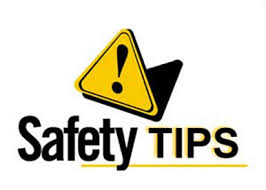
1. Know your limits and don’t work alone
For some people, working on a roof is inherently not a good idea. This could be due to physical limitations or other concerns – but the main point is to understand where or not working on your own roof is a good idea in the first place. This may require a realistic assessment of your individual situation. If you do decide to work on your roof, it’s much better to have someone with you in case something should happen. Safety precautions are the single most important aspect of roofing!
2. Be aware of debris and other hazards
When working on a roof, your footing and balance need to be strong and controlled. It’s important to have a sharp awareness of where you put your feet, and any loose debris or other hazards that may cause you to slip. Again, safety is always first. Paying close attention to your footing and balance is crucial – as is making sure the work area is clean and free from debris.
3. Make sure your ladder is level and properly anchored on the ground
The surface on which your ladder is resting should be strong, hard, and level. If any of these characteristics are missing, safety standards go down quickly. If the base of your ladder is resting in dirt or grass, digging small depressions or holes can prevent the base of the ladder from slipping. Be aware of the texture and level of any surface on which your ladder is resting, and remember the importance of ladder safety.
4. Take current and recent weather conditions into account
If it has rained recently (or if snow has melted), the moisture on the roof can make your situation less safe. Working on the roof in dry conditions is always preferable from a safety standpoint. Also be aware of fallen leaves that may have collected on the roof, as these can be very slipper underfoot.
5. Use a safety harness and safety gear
This step is often skipped by people who work on their own roofs – but it shouldn’t be. A safety harness attached to a proper anchor point on the roof is among the most important safety measures you can undertake. Other important safety gear includes good boots with quality traction, a hard hat, and safety goggles.
6. Don’t get distracted
The roof may offer an entirely new perspective of your neighborhood, but unless you’re sitting at rest, it’s important to keep your eyes on what you’re doing in order to avoid mishaps.
7. Hire a pro roofer
Working on the roof can be very safe, but only if all of the correct precautions are taken. Experience and skill are also important. For these reasons, there is a very good argument to hire a reputable professional to conduct roof repairs and maintenance, rather than taking safety risks on your own. Make sure any professional you hire is experienced, trained, licensed and insured to perform roofing work.
